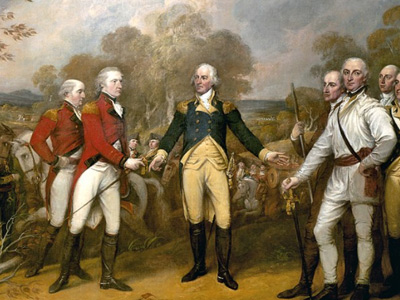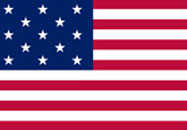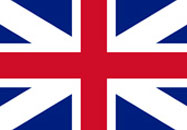Battles of Saratoga (1777)
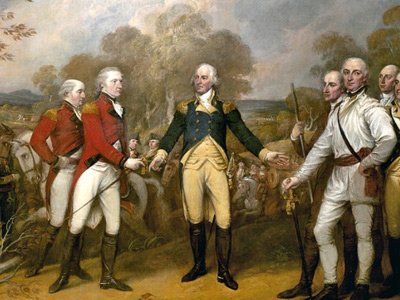
Legacy
The battlefield and the site of Burgoyne's surrender have been preserved, and are now administered by the National Park Service as the Saratoga National Historical Park, which was listed on the National Register of Historic Places in 1966. The park preserves a number of the buildings in the area and contains a variety of monuments. The Saratoga Monument obelisk has four niches, three of which hold statues of American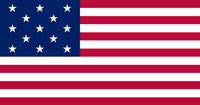 The United States of America (USA), is a country in North America. The American Revolutionary War (April 19, 1775 - September 3, 1783) was the military conflict in which American patriot forces under George Washington's command defeated the British, establishing and securing the independence of the United States. After the Revolution, the United States gained independence, the first nation-state founded on Enlightenment principles of liberal democracy. commanders: Gates and Schuyler and of Colonel Daniel Morgan. The fourth niche, where Arnold's statue would go, is empty. A more dramatic memorial to Arnold's heroism, that does not name him, is the Boot Monument. Donated by Civil War General John Watts de Peyster, it shows a boot with spurs and the stars of a major general. It stands at the spot where Arnold was shot on October 7 charging Breymann's redoubt and is dedicated to "the most brilliant soldier of the Continental Army".
The United States of America (USA), is a country in North America. The American Revolutionary War (April 19, 1775 - September 3, 1783) was the military conflict in which American patriot forces under George Washington's command defeated the British, establishing and securing the independence of the United States. After the Revolution, the United States gained independence, the first nation-state founded on Enlightenment principles of liberal democracy. commanders: Gates and Schuyler and of Colonel Daniel Morgan. The fourth niche, where Arnold's statue would go, is empty. A more dramatic memorial to Arnold's heroism, that does not name him, is the Boot Monument. Donated by Civil War General John Watts de Peyster, it shows a boot with spurs and the stars of a major general. It stands at the spot where Arnold was shot on October 7 charging Breymann's redoubt and is dedicated to "the most brilliant soldier of the Continental Army".
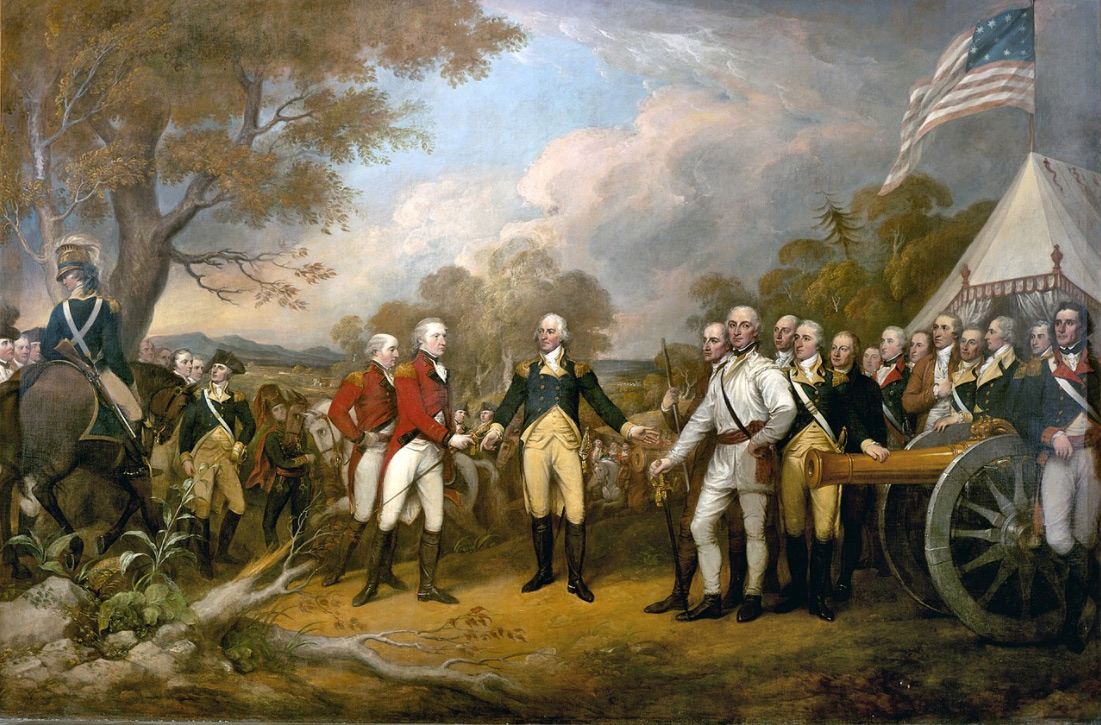
The scene of the surrender of the British General John Burgoyne at Saratoga, on October 17, 1777, was a turning point in the American Revolutionary War that prevented the British from dividing New England from the rest of the colonies. The central figure is the American General Horatio Gates, who refused to take the sword offered by General Burgoyne, and, treating him as a gentleman, invites him into his tent. All of the figures in the scene are portraits of specific officers. Trumbull planned this outdoor scene to contrast with the Declaration of Independence beside it. John Trumbull (1756–1843) was born in Connecticut, the son of the governor. After graduating from Harvard University, he served in the Continental Army under General Washington. He studied painting with Benjamin West in London and focused on history painting. Major figures in the painting (from left to right, beginning with mounted officer): American Captain Seymour of Connecticut (mounted) American Colonel Scammel of New Hampshire (in blue) British Major General William Phillips (British Army officer) (in red) British Lieutenant General John Burgoyne (in red) American Major General Horatio Gates (in blue) American Colonel Daniel Morgan (in white). The dimensions of this oil painting on canvas are 365.76 cm by 548.64 cm (144.00 in by 216.00 in).
( Click image to enlarge)
HISTORY
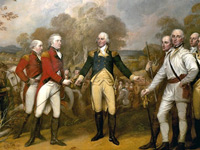
RESOURCES
This article uses material from the Wikipedia article "Battles of Saratoga (1777)", which is released under the Creative Commons Attribution-Share-Alike License 3.0.
© Stories Preschool. All Rights Reserved.
